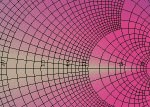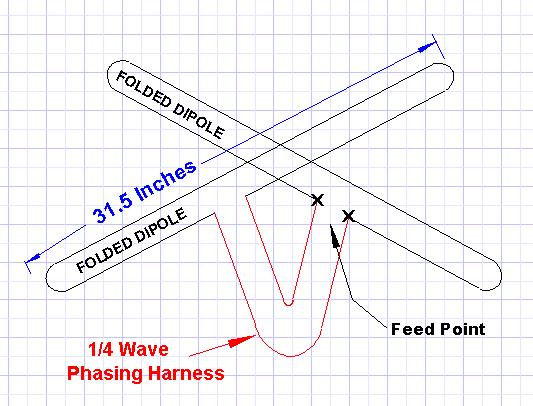 Here are construction plans of a Turnstile antenna for satellite communication, such as digipeating through the ISS digipeater on the 2 meter amateur radio band.
Here are construction plans of a Turnstile antenna for satellite communication, such as digipeating through the ISS digipeater on the 2 meter amateur radio band.
A Turnstile antenna with a reflector underneath it makes a good antenna for space communications because it produces a circularly polarized signal pattern and also has a broad, high angle pattern. Due to these characteristics, there is no need to rotate the antenna.
My design goals were that it had to be cheap (of course!) and made from easily available materials. In looking at other turnstile antenna designs, one thing that has always bothered me is that they use coax (un-balanced feedline) and directly feed the antenna (balanced load). According to the antenna books, this situation tends to cause the coax to radiate, and upset the overall radiation pattern of the antenna.
The Antenna
What I decided to do is to use “folded dipoles” instead of traditional ones. Then feed the turnstile antenna with a 1/2 wavelength 4:1 coaxial balun. This type of balun also takes care of the “balance-to-unbalance” problem usually encountered as well.
The drawing below shows how to make a turnstile antenna. Please note, this is not to scale.
Construction of a turnstile reflector antenna consists of two 1/2 wavelength horizontal dipoles that are oriented 90 degrees from each other (like a big X). Then feed one dipole 90 degrees out of phase of the second one. One problem with Turnstile Reflector antennas is that the structure to hold up the reflector part can be cumbersome.
Fortunately (some might disagree) I decided to build my turnstile antenna in my attic. This solves another problem in that I also don’t have to concern myself with is weatherizing the antenna.

Leave a Reply